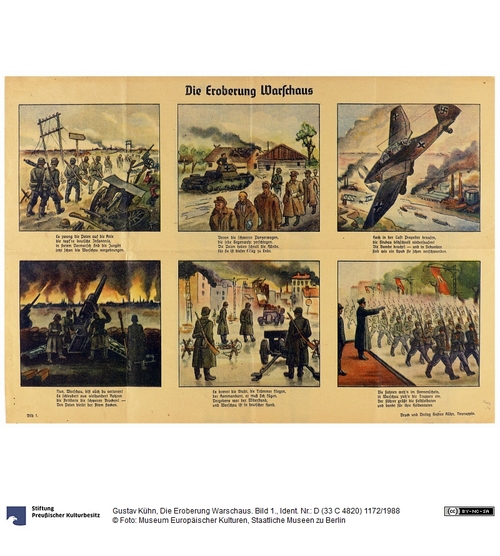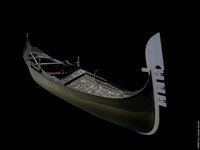Querformat. Der Bogen zeigt in zwei Reihen jeweils drei Darstellungen, die mit vier Versen untertextet sind.
1. Reihe, 1. Bild: Deutsche Soldaten im Vormarsch, am Wege zerstörtes Material der Polen "Es zwang die Polen auf die Knie / Die tapf´re deutsche Infanterie / in stetem Vormarsch sind die Jungen / jetzt schon bis Warschau vorgedrungen"
2. Reihe, 3. Bild: Adolf Hitler grüßt die vorbeiziehenden Soldaten "Die Fahnen weh´n im Sonnenschein, / in Warschau zieh´n die Truppen ein / Der Führer grüßt die Feldsoldaten / und dankt für ihre Heldentaten".
en

